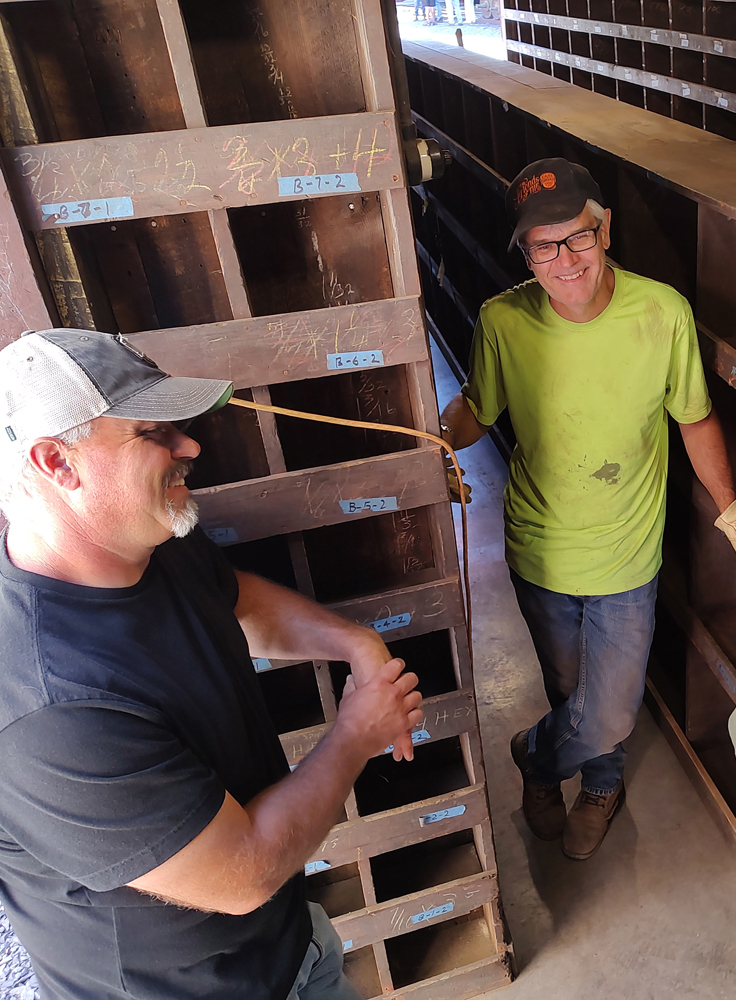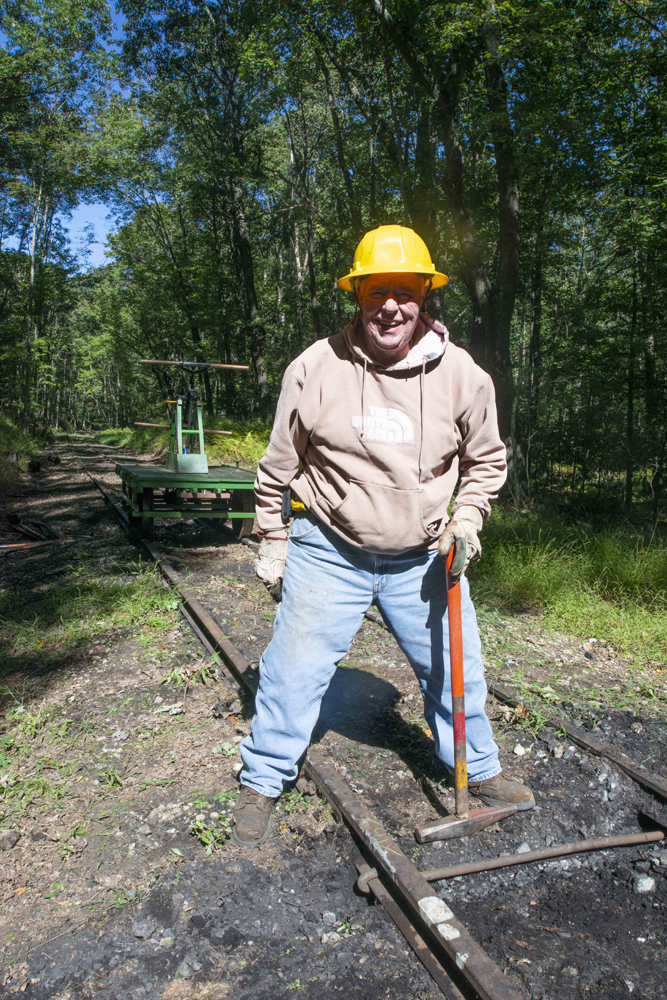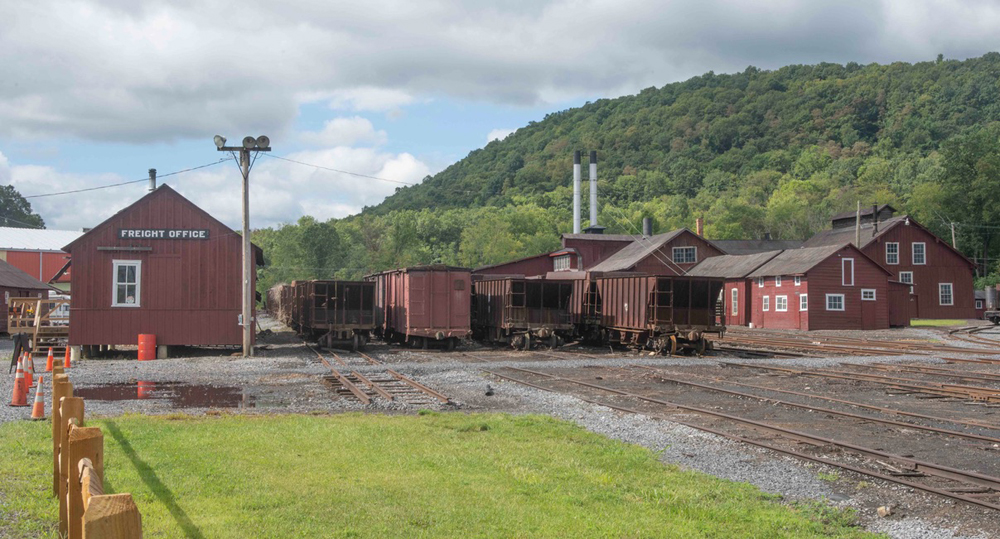
ROCKHILL FURNACE, Pa. – The Friends of the East Broad Top Railroad today is kicking off registration for a new teenage-volunteer program in an outreach to recruit and engage “the next generation” of preservationists for the historic Central Pennsylvania narrow gauge short line. Closed in 1956 and revived twice since then, the former coal-hauling railroad enjoys status as a National Historic Landmark.
Registration for the free one-day event to be held Saturday, June 15, opens today for Friends members and their children, nephews/nieces or grandchildren, and will be extended to the public on May 15 for any remaining open spots. The group is limited to 12 participants for this first event, with a second day planned for later in the summer and eventually, multiple days in 2025 and beyond.
A Friends announcement describes the program as being “intended to foster an interest in railroads in general and the East Broad Top in particular, and to encourage future FEBT volunteers and leaders.” The aim is to “have fun, work hard, learn safe working practices, and experience new things.”

Teens will arrive at 9 a.m. for a safety briefing and orientation, tour EBT’s circa-1900 belt-driven machine shop and other historic buildings, ride the 11 a.m. train, break for lunch and then spend the afternoon working to restore a track in the Rockhill Furnace yard.
Here are the guidelines:
— Participants must be 13 to 17 years old (18 if still in high school).
— For insurance liability purposes, they must currently be, or join as, a Friends member, either as a student member ($30) or a family member ($45).
— One adult family member, also a Friends member, may accompany the teenager for the day (parent, grandparent, aunt, uncle, sibling).
— Candidates must submit a completed registration and medical release form with parent/guardian approval. The form is posted here and should be completed and returned to youthvol@febt.org. Responses will be registered in the order received at this email address.
— When registration for June 15 is full, others may be waitlisted for a later session.
The “Young Easties” program is an outgrowth of FEBT’s highly successful adult volunteer program, according to board member Dave Bulman, who oversees that activity. An early advocate for younger people, he said the “soft launch with limited size” will enable FEBT to “feel our way and do it well.”
The goal, he said, is to “get the next generation of EBT and FEBT volunteers interested in the railroad to help to preserve and restore [it]. . . . It’s essential that we find a way to bring in the next generation.”
The group, he said, interviewed leaders of youth programs at two other narrow gauge preservation railroads, Cumbres & Toltec Scenic in Colorado and its associated Friends of the C&TS, and Talyllyn in Wales, United Kingdom.
Saved in 1950 and considered to be the world’s first preserved railway, Talyllyn now offers an extensive youth program, divided by tasks and age groups into under-14, under-16, 11-18 and 14-25 categories.
Friends of the East Broad Top’s volunteers have been active for more than two decades – during the EBT’s steam tourist era 1960-2011, during its 2011-2020 shutdown, and since the railroad was revived by the EBT Foundation, Inc., four years ago. Workers restore the many buildings of the shop complex, repair rails and ties alongside the Foundation’s full-time track crew, rebuild freight and passenger rolling stock, and conduct docent tours of the shops and eight-stall roundhouse.
Teens will be directed by trained Friends program leaders who hold recognized government background-check youth clearances. Overseeing the operation is Gene Tucker, a retired Episcopal priest who leads the volunteer component of the Friends’ track crew (See “Friar Tuck and the East Broad Top,” Trains News Wire, Oct. 13, 2022).
The initial work session, Tucker said, will likely center on “tie installation of a short piece of Track No. 7” in Rockhill yard, “a short piece of track that butts up against the [Rockhill] trolley museum ticket kiosk.”

“It’ll be a day in the life of the 19th century,” he said. “We’ll talk about track structure and how it functions – gauge, track surface, joint offset.”
“We think the demand for this is fairly high,” he said. “In our discussions for next year, there will be many more than two [date] offerings.”
Starting a pilot program, he said, could lead to youth helping with the Friends’ regular restoration activities.
Tucker, now in his mid-70s, gained his track-restoration skills by volunteering at the Walkersville Southern tourist line in Maryland. That operation, he said, has attracted younger helpers for about 10 years and, as a result, now has “a whole group of young [people] in their 20s and 30s, and a few younger than that.”
To him, the reason for starting Young Easties is that “those of us who are of riper years are not going to be here forever. And we need to cultivate a new generation to appreciate the EBT [and] what it means. It’s a heavy lift — we’ve done a lot in four years [since the Foundation took over] but there is so much more to do.”













